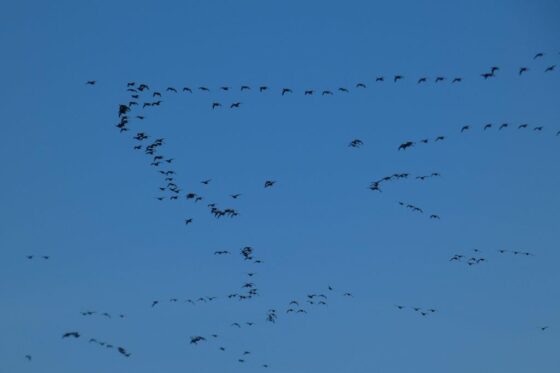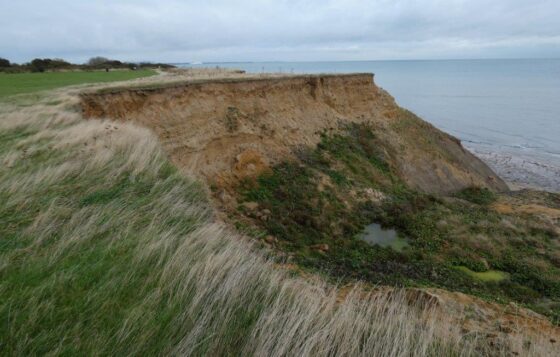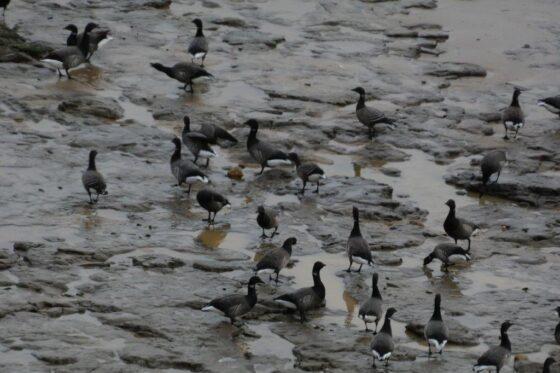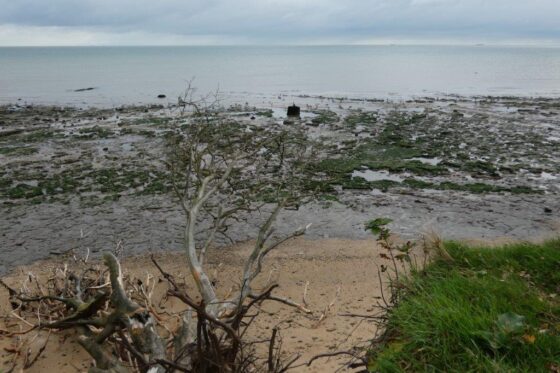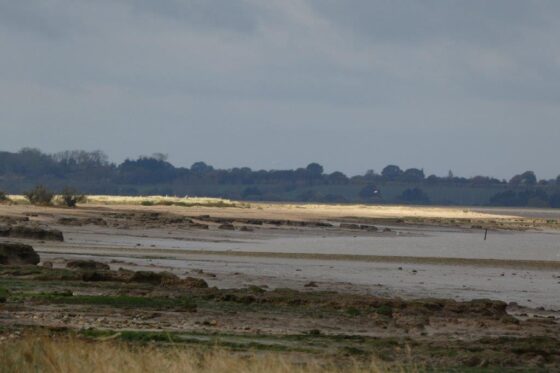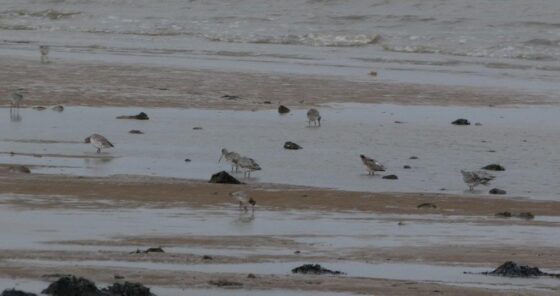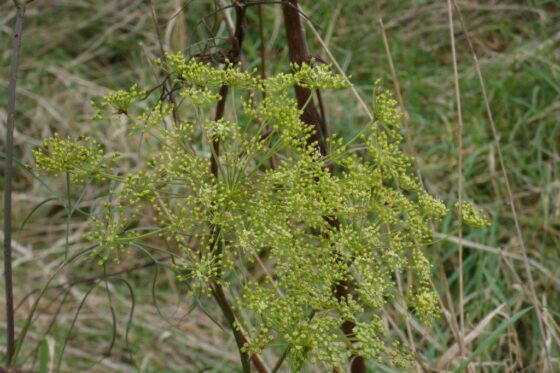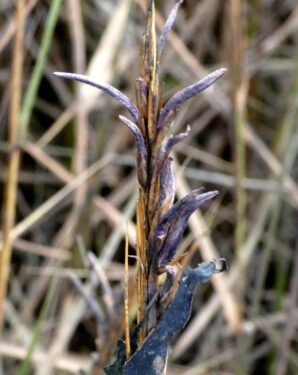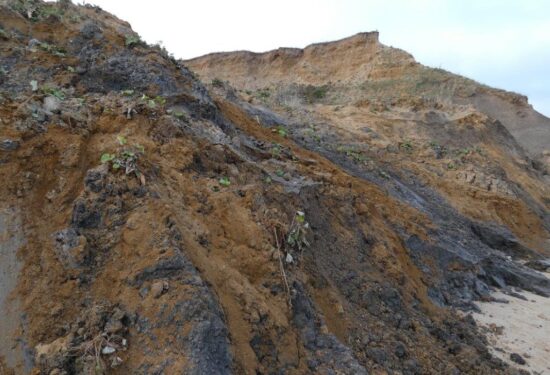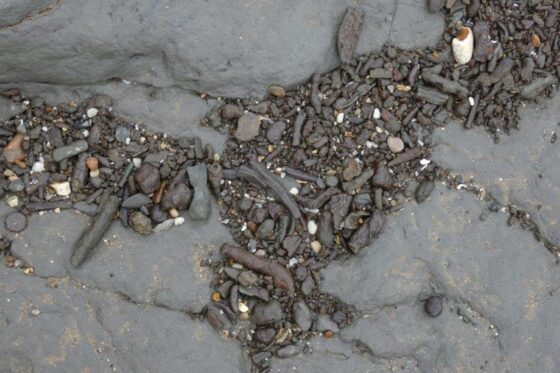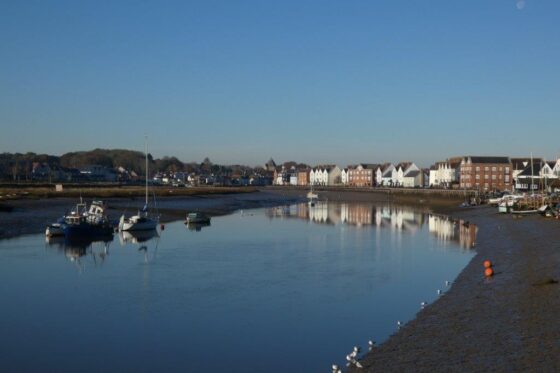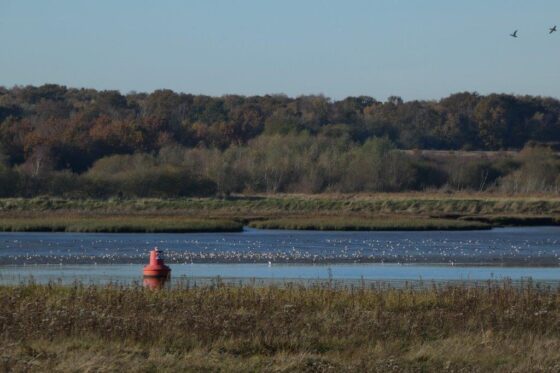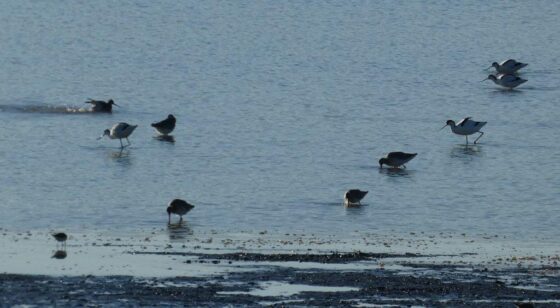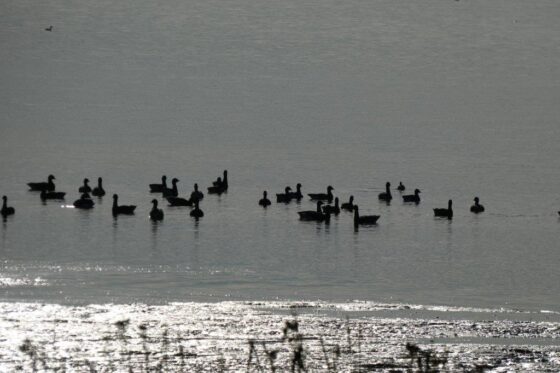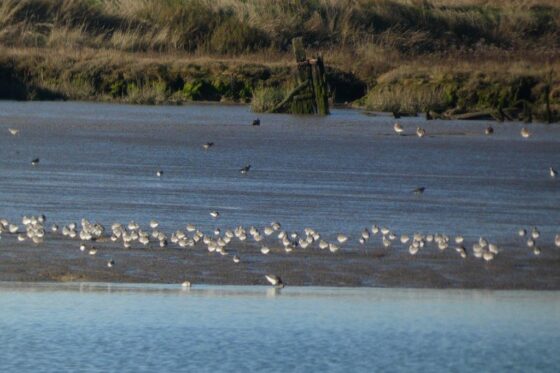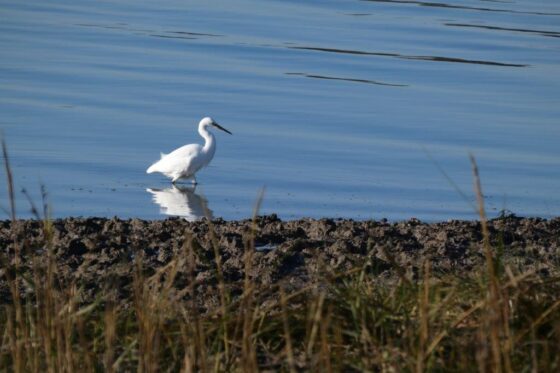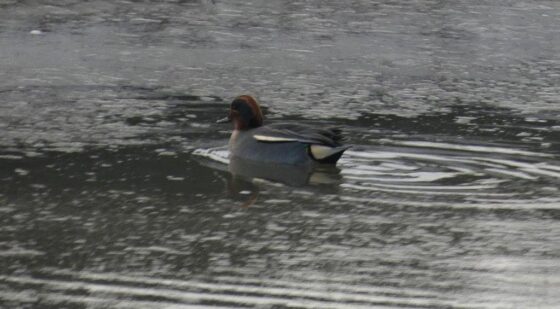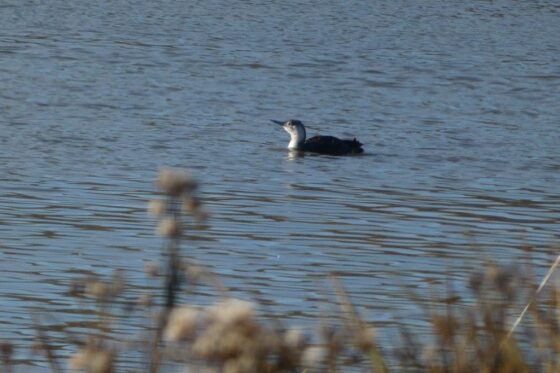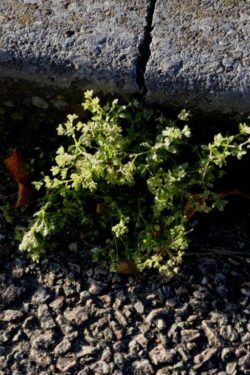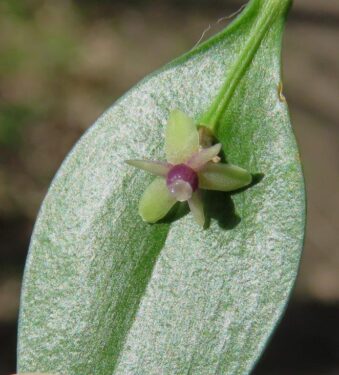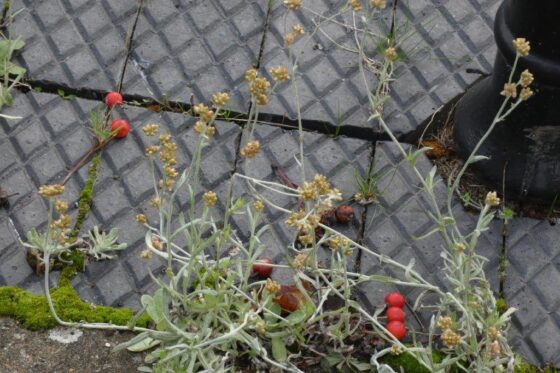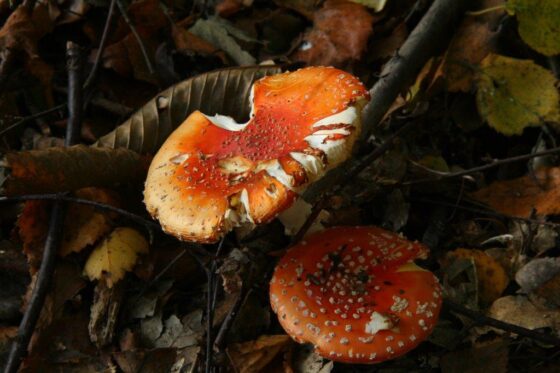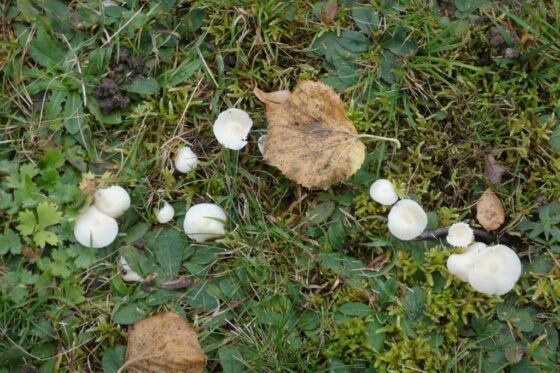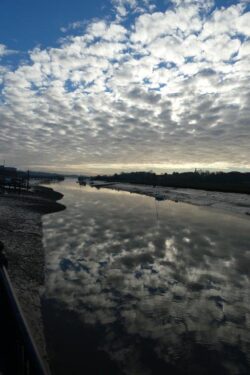Two walks in November, as autumn gave way to winter.
Early in the month, our day on the Naze may have been in unremittingly dull conditions but the wildlife was excellent, starting with several hundred babbling Brents on the foreshore. Offshore, there were at least 40 plunge-diving Gannets (a good number for the Essex coast), with good views of a Mediterranean Gull and a passing Shag, while migrant Grey Wagtails, Starlings, Fieldfare, Brambling and Siskins flew in off the sea.
Along Stone Point, an array of feeding waders included Sanderlings, Ringed Plovers, Turnstones and Redshanks, and around 200 Bar-tailed Godwits. A Buzzard flapped along the beach, and a female Stonechat popped out of the coastal scrub.
Aside from birds, lingering summer delights included Hog’s Fennel and Sea Mayweed still in flower, and Cord-grass heavily infested with its own, large, rather scarce form of Ergot.
And always reliable, the internationally significant geology of London Clay and Red Crag, with attendant fossils indicative of the climate when each was laid down, and evidence of ancient volcanic ash clouds provided us with something interest right through to dusk.
At month’s end by the Colne Estuary, the weather could not have been more different: clear blue skies for much of the time, barely a breath of wind and really very mild.
A morning feast of waterbirds as the tide came in, with maybe 3kiloKnots, hundreds of godwits (both species), Avocets, Lapwings, Redshanks and Brent Geese…
And much more, from Teals and Wigeons, Little Egrets and Dabchicks, to bird of the day, a Red-throated Diver, rarely seen this far upriver.
Later on, Cutthroat Lane and Cockaynes Reserve had fewer birds, but some lovely autumn colours.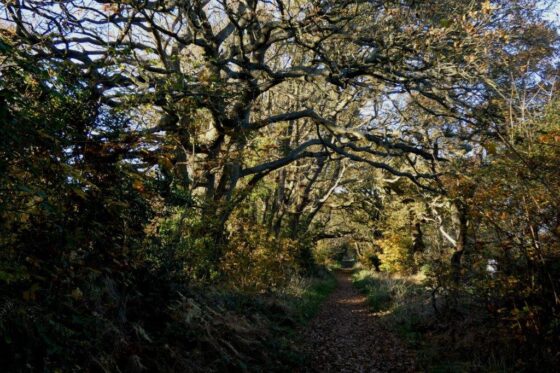
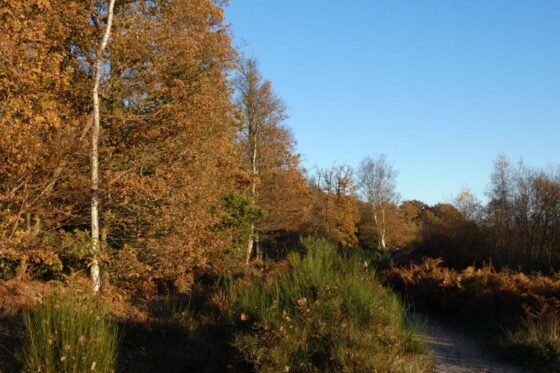
A few lingering flowers included Jersey Cudweed and Four-leaved Allseed on Wivenhoe Waterfront, and Lesser Calamint on the Essex Alps, while early rather than late was Butchers’-broom, normally coming into flower in the New Year.
And fungi included Cordgrass Ergot (again), here with its even scarcer orange hyperparasite Gibberella), Birch Bracket and Fly Agaric, and a scattering of waxcaps right at the end of their season, given the forecast of first frosts to come….
The most sublime winter day of sunshine and still air, evocatively burnished with the gentle sound of falling leaves and burbling Brents!
